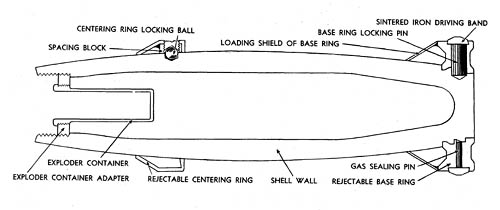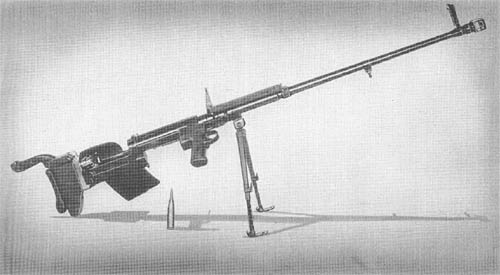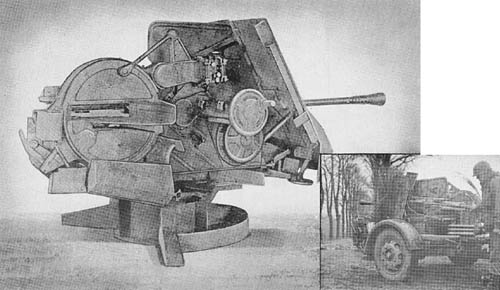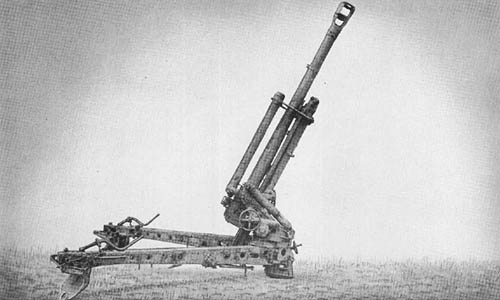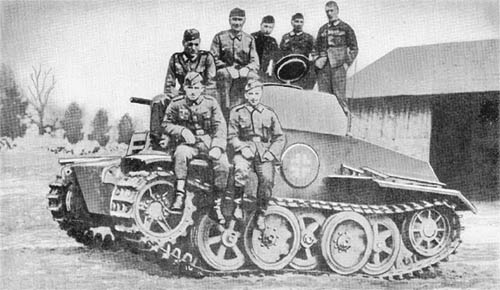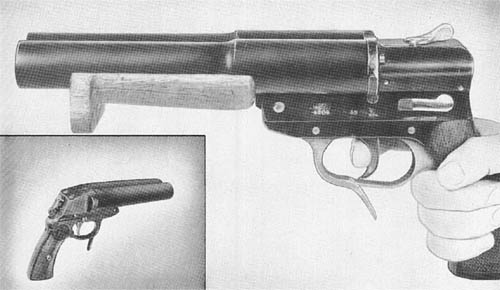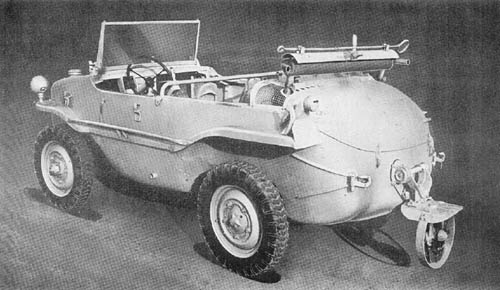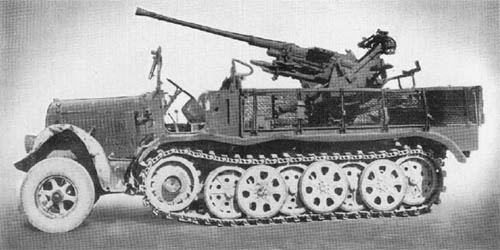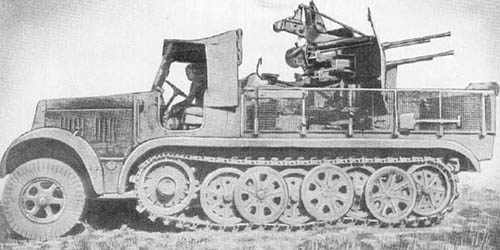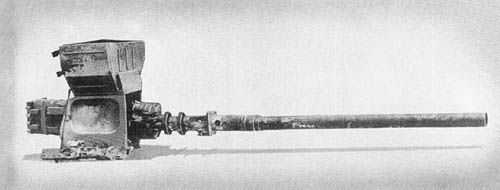
The Mk. 108 A-3 is an automatic, air cooled, belt-fed weapon operated by blowback and firing electrically from an open bolt. Initial cocking and initial depression of the sear to release the bolt are accomplished by compressed air. The gun is mounted on its side, and fires through the propeller hub in
Sixty rounds of ammunition are fed by means of a disintegrating belt from an ammunition can mounted above the gun. On release of the sear, the bolt travels forward under the action of two driving springs. A projection on top of the bolt passes through the ring extracting a round and forcing it into the chamber. After firing the empty cartridge case reseats itself in its link. The ejection is accomplished by pawls actuated by camming grooves cut in the top of the bolt. Position of a new round takes place by the same action. A feature of the gun is the fact that the barrel and receiver do not move in recoil, the entire force of which is taken up by the rearward motion of the bolt against driving springs which act as buffers on recoil. There is no locking action between the barrel and bolt at any time.
All ammunition found to date has been high explosive, high explosive-tracer, incendiary and incendiary tracer. It is doubtful if the muzzle velocity is high enough for the effective use of armor piercing ammunition.
SPECIFICATIONS
| Caliber | 29.6 mm (1.17 in.) | |
| Weight (total) | 265 lb. | |
| Weight of gun | 136 lb. | |
| Weight of mount | 28 lb. | |
| Weight of ammunition can | 36 lb. | |
| Weight of ammunition (60 rounds) | 65 lb. | |
| Weight of recoiling parts | 24 1/2 lb. | |
| Length of gun with blast tube | 7 ft. 6 3/4 ins. | |
| Length of gun | 3 ft. 5 1/4 ins. | |
| Length of barrel | 21 1/2 ins. | |
| Number of lands and grooves | 16 | |
| Maximum length of recoil of bolt | 11 1/2 ins. | |
| Rate of fire | 500 rds./min. | |
| Muzzle velocity (approx.) | H.E.—1,650 f/s.* |
*Not verified
German: p. 255
